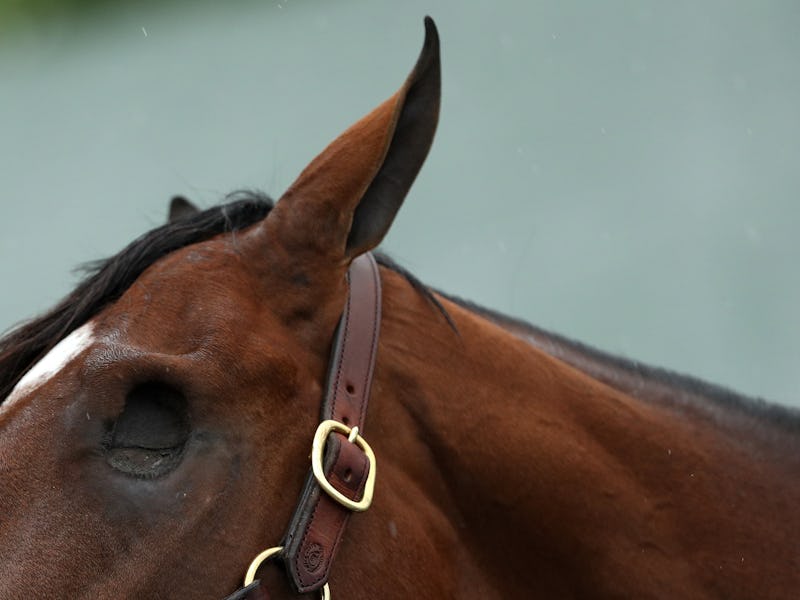How a One-Eyed Horse Named "Patch" Can Race in the Kentucky Derby
And he starts with his blind eye pointed towards his competition.

Running in the 2017 Kentucky Derby on Saturday is a one-eyed horse named Patch. The underdog will start at the 20th post position, far to the left of the pack, his empty left eye socket pointed toward his competitors.
While we won’t know how Patch will fare in the Derby, veterinarians say that his missing eye is probably the least important part of his chances. Since horses see differently than people, losing an eye doesn’t have an impact on their ability to perform. And while blind horses aren’t allowed to race, Patch isn’t the first one-eyed racehorse in the Kentucky Derby. None of his one-eyed predecessors have won the Derby, however, begging the question of whether being blind on one side affects Patch’s chances because he can’t see his competition.
“If he’s been doing it successfully at the levels he’s been doing it he’s certainly comfortable,” Clara Fenger, an equine veterinarian who has worked for the Kentucky Racing Commission as a State Veterinarian tells Inverse. “There are a lot of factors that go into it that have more to do with his legs, his lungs, and his heart than his eyes.”
Patch runs on the track during morning training prior to the 143rd Kentucky Derby at Churchill Downs on May 5, 2017 in Louisville, Kentucky.
“In fact, many racehorses run in blinders to limit what they can see to prevent them from being distracted by someone coming up behind them,” Mary Lassaline, a veterinary ophthalmologist at the University of California Davis told Inverse. You don’t actually really want your horse to be able to see its competition during a race.
A two-eyed horse has a nearly 360-degree field of vision, and is only unable to see what’s directly in front of or behind itself. This means each eye gives it about 180 degrees of vision, which overlap in a bit in front of the horse’s face and a bit behind its tail. “So, losing vision in one eye means they can’t see most of what is on that side of their body, but can use their remaining eye to see what is in front and on the entire ‘visual’ side,” Lassaline says.
As for Patch, the only real impact of being blind on his left side is that his jockey has to be a little more aware of what’s happening on that side, says Fenger. Maybe not so auspicious for Patch is the fact that of the three one-eyed horses that have run in the Kentucky Derby recently, none have finished better than 13th. “Of course, it’s never easy starting from the 20th post position in the Derby no matter how many eyes he has,” Fenger points out. So no matter that Patch can’t see his competition to his left, his shot at the roses is just as good as any horse with the misfortune to start all the way on the outside.